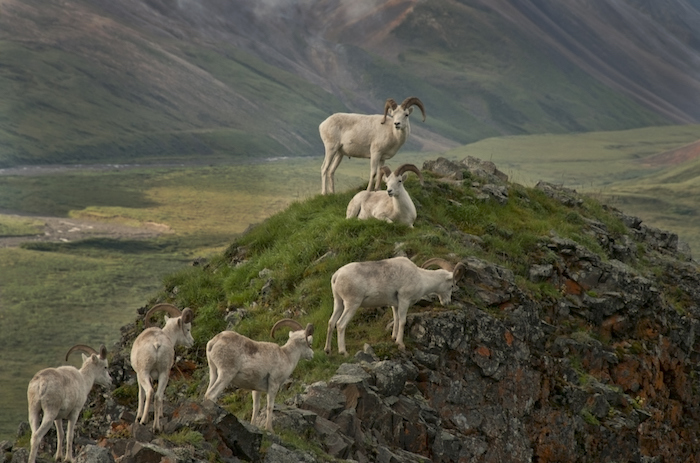Alpine studies and climate change


Professor Dave Verbyla is working with a team of scientists trying to find out why Dall sheep populations in Alaska and western Canada have declined by more than 20 percent since 1990. The decline is most pronounced in the western Brooks Range, where the population has dropped 70 percent. Declining populations have led to emergency harvest closures and a contentious wildlife management issue that affects sport and subsistence hunters and wildlife viewers.
“We know shrubs are expanding in the Arctic tundra but we don’t know if they are expanding in the alpine area,” said Verbyla.Verbyla, along with UAF Assistant Professor Todd Brinkman, is participating in a four-year study funded by NASA that will look at the changing habitat of Dall sheep in Alaska, the Northwest Territories, northern British Columbia and the Yukon Territory. The study will consider how vegetation and snow conditions are changing in alpine ecosystems and how those changes affect Dall sheep.
Verbyla will use remote sensing to investigate expansion of the alpine shrub zone over time and the dynamics of the snowpack from 2000 to present during critical points in the sheep’s lives, such as spring lambing in mid-May and the upper limits of snowpack on July 1, which correlate to sheep survival rates. This past year, Verbyla used MODIS satellite data to estimate snowline elevation during the lambing period in 28 mountain areas. Shrubs provide cover for the sheep’s chief predators, coyotes and wolves. If shrubs encroach on the alpine area or if the snowline is at a lower elevation during cold spring weather, sheep may be more susceptible to predators.
Brinkman, a wildlife ecologist, is comparing harvest data to habitat and population dynamics to try and determine how changing conditions will affect hunting and wildlife viewing. Three Pacific Northwest scientists will study the characteristics of snowpack, population dynamics and potential changes in alpine hydrology.

